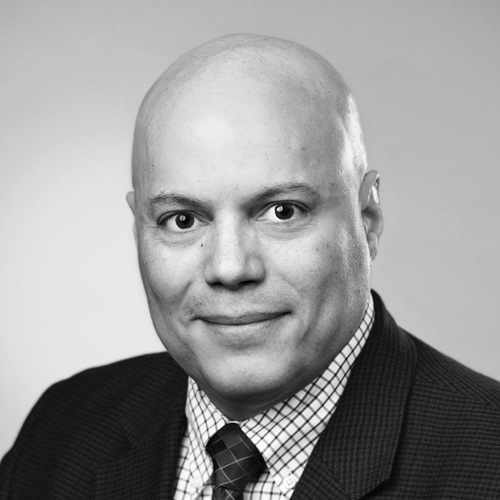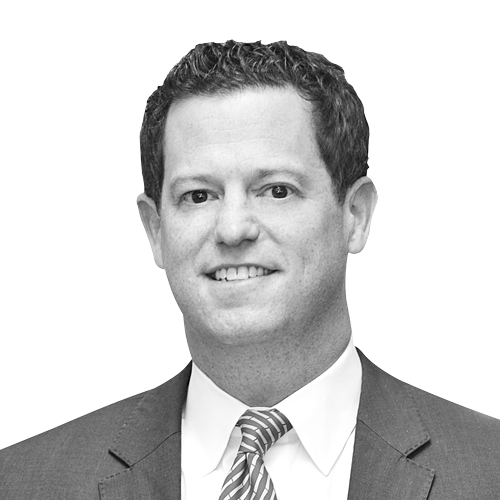It seems that you knew early on that you wanted to combine clinical care and administration, since you obtained both an MD and a master of public health.
Amar Desai: That was probably inspired by a couple of things. First, our family’s pediatrician was incredibly caring and committed. He took an interest not only in the child, but in the entire family, and he seemed very fulfilled by what he did. Second, my father’s three sisters all had major health issues. One was in India; the other two were in the UK. I saw the difference individual doctors could make, but also the profound impact health systems and policy decisions could have on how care is ultimately delivered.
After getting the dual degrees and working in academic medicine for a few years, you took a job as a consultant at McKinsey. Why?
Desai: I wanted a breadth of experiences across different sectors of healthcare. Two-thirds of my time at McKinsey was spent working with healthcare providers and payers, including the government; the other third was spent on the biopharmaceutical/medical device side. It was great exposure and helped me understand how to make clinical value translate into economic value and vice versa.
“I saw the difference individual doctors could make, but also the profound impact health systems and policy decisions could have on how care is ultimately delivered.”
Did you work on any memorable projects there?
Desai: Yes. One was for a multi-state hospital system. We wanted to reduce wait times, improve clinical care, facilitate the availability of beds, improve the utilization of the operating rooms, and enhance the overall service experience. We analyzed its entire operation to see how patients flowed through the system and ended up increasing the capacity of the operating rooms while reducing the system’s down time—improving the movement of patients from the operating room to recovery, establishing a system of more timely discharges, and making all the interactions more patient-oriented and clinically appropriate.
Those lessons must come in handy at Keck/USC. What are some other things you want to accomplish there?
Desai: Our academic health system delivers complex and distinctive tertiary care. We want to make that expertise available to the larger population. We want some of our specialists to team up with local doctors so we can extend the access of highly specialized, complex care. We envision patients coming to us when they need complicated, sophisticated treatments and then transitioning back to the community when their more serious issues are resolved.
It sounds like you’re trying to apply a triage concept to the larger USC community.
Desai: That’s a good way of putting it. We have over 700 physicians serving forty ambulatory sites. Over the last eighteen months, we’ve extended ourselves geographically and increased our professional revenue by over 10 percent and our outpatient visits by 15 percent, not only by acquiring new practices, but by driving organic growth through improved access to our existing programs and physicians and making them available in the right places.
How do you build consistency and ensure that a high level of care is delivered throughout the system?
Desai: That is definitely a challenge and one of my top priorities. I want people to have a profound, distinctive experience no matter where they get our care. To do that, we need to establish best practices and provide training and reinforcement. We also have to strengthen our infrastructure and have more robust navigation systems. In the future, call agents will be able to help patients identify the appropriate physicians, schedule appointments, and answer questions via one phone call. It requires a lot of work to connect all the dots, but we want to provide a unified, consistent experience for patients and their families.
How about the care itself? There seems to be an increasing focus these days on collaborative medicine. Is USC moving in that direction, too?
Desai: Absolutely. Many academic health systems can get caught up in silos of care because of traditionally department-oriented structures. We are offering a multidisciplinary approach and greater integration across departments in some of our signature programs. For example, our spine center is now a mix of neurosurgeons, orthopedists, physical therapists, occupational therapists, and pain-management experts. Melanoma patients are seen by oncology, dermatology, ENT, and, if necessary, plastic surgery. The goal is to tap into different specialties to deliver the right team of experts to the patient.
What is the biggest obstacle to making this happen?
Desai: It requires a reorientation from individual-specialty care to a team-based approach. It also, to some extent, requires a re-think with regards to how physicians are trained. Historically, medical school has encouraged independent work and a focus on the individual patient in front of you.
We still need some of that to produce great diagnosticians and surgeons, but learning to work in teams and thinking about populations of patients is increasingly important. Just as tying a surgical knot and diagnosing chest pain are necessary skills, so is being a good team member. We need to teach it and reward it. There also needs to be more focus on communication skills—on listening, interacting with patients and other care providers, and organizing teams. Physicians need to learn that consulting with others can improve the quality of care they deliver to their patients.

